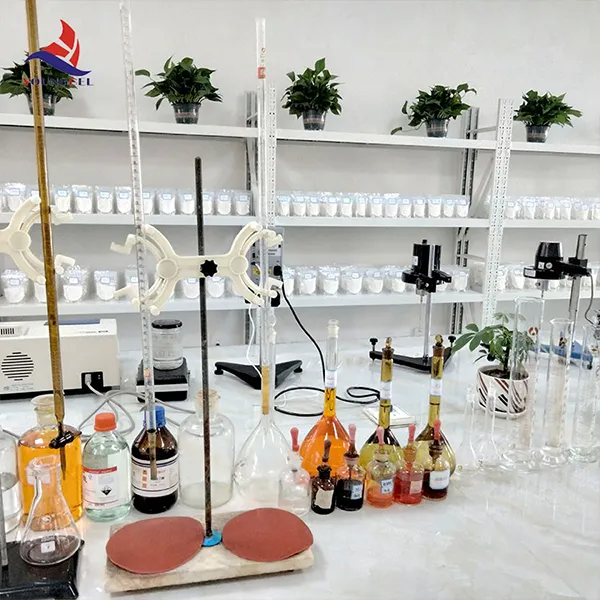The Rise of Additive Powder in Modern Industries
In recent years, additive powders have emerged as a pivotal innovation in various industries, including manufacturing, pharmaceuticals, and food production. These versatile materials not only enhance the properties of end products but also streamline production processes. This article explores the significance of additive powders, their applications, and their impact on industry standards.
Understanding Additive Powders
Additive powders are finely processed materials that are used to modify the properties of a base material during production. The term additive typically refers to substances that enhance or alter the physical and chemical properties of a product. These powders can encompass a range of elements, including polymers, metals, ceramics, and other compounds. The primary purpose of additive powders is to improve characteristics such as strength, durability, flexibility, and thermal stability.
Applications Across Industries
1. Manufacturing and 3D Printing One of the most significant applications of additive powders is in additive manufacturing, commonly known as 3D printing. Materials like nylon, titanium, and aluminum powders are used in selective laser sintering (SLS) and fused deposition modeling (FDM) technologies. These methods allow for the creation of intricate designs that were previously difficult or impossible to achieve with traditional manufacturing techniques. The ability to produce complex geometries with minimal waste has revolutionized product design and prototyping.
2. Pharmaceuticals In the pharmaceutical industry, additive powders play a crucial role in the formulation of medicines. They can improve solubility, bioavailability, and controlled release of active ingredients. For example, excipients, which are substances formulated alongside the active ingredient of a medication, often come in powder form and are critical for the efficacy and stability of the final product. Additionally, 3D printing of medications allows for patient-specific dosages, enhancing the precision of treatment plans.
3. Food Production The food industry has also seen a rise in the use of additive powders. Ingredients such as flavor enhancers, preservatives, and nutritional supplements are commonly powdered and incorporated into food products. These powders can extend shelf life, improve taste, and provide essential nutrients. For instance, protein powders derived from sources like whey and soy are widely used not only in sports nutrition but also in everyday foods.
Benefits of Utilizing Additive Powders
additive powder

The incorporation of additive powders into manufacturing processes offers several benefits
- Customization Additive powders can be tailored to meet specific requirements of different applications. This customization enables industries to develop products that cater to niche markets or specialized needs.
- Cost-Effectiveness By utilizing additive manufacturing techniques, companies can significantly reduce material waste and lower production costs. The ability to print on demand minimizes inventory costs and supports just-in-time manufacturing.
- Sustainability The use of additive powders can contribute to more sustainable production practices. By optimizing the use of materials and reducing waste, companies can lessen their environmental impact. Moreover, many additive powders are derived from renewable resources, aligning with the growing demand for eco-friendly products.
Challenges and Future Trends
Despite their numerous advantages, the use of additive powders does come with challenges. The consistency and quality of powder materials can vary significantly, impacting the final product's properties. Ensuring that powders meet regulatory standards, particularly in the pharmaceutical and food industries, is essential for consumer safety.
Looking to the future, the demand for additive powders is likely to grow as industries continue to adopt innovative technologies. Research into new materials, such as bio-based powders and smart materials that respond to environmental stimuli, is ongoing. Furthermore, advances in powder recycling and reuse within additive manufacturing processes will further enhance sustainability.
Conclusion
Additive powders represent a transformative element in contemporary production techniques across various industries. Their ability to enhance product performance, support innovative manufacturing methods, and promote sustainability underscores their critical role in shaping the future of manufacturing and beyond. As technological advancements continue to unfold, the potential of additive powders remains vast and largely untapped, making them an exciting area for future exploration and development.
-
A Comprehensive Guide to Methyl Ethyl Hydroxyethyl Cellulose: Applications and Industry InsightsNewsNov.24,2025
-
Understanding Methyl 2 Hydroxyethyl Cellulose: Uses, Benefits & Industry InsightsNewsNov.24,2025
-
Hydroxyethyl Methyl Cellulose HEMC: Industrial Uses, Benefits & Future TrendsNewsNov.23,2025
-
HEMC Cellulose: Versatile & Sustainable Industrial Polymer | YoungcelNewsNov.23,2025
-
Methyl Hydroxyethyl Cellulose: Versatile Building Block for Industry & SustainabilityNewsNov.23,2025
-
CAS 9032 42 2: Understanding Polyvinyl Alcohol's Impact on Industry & SustainabilityNewsNov.22,2025




